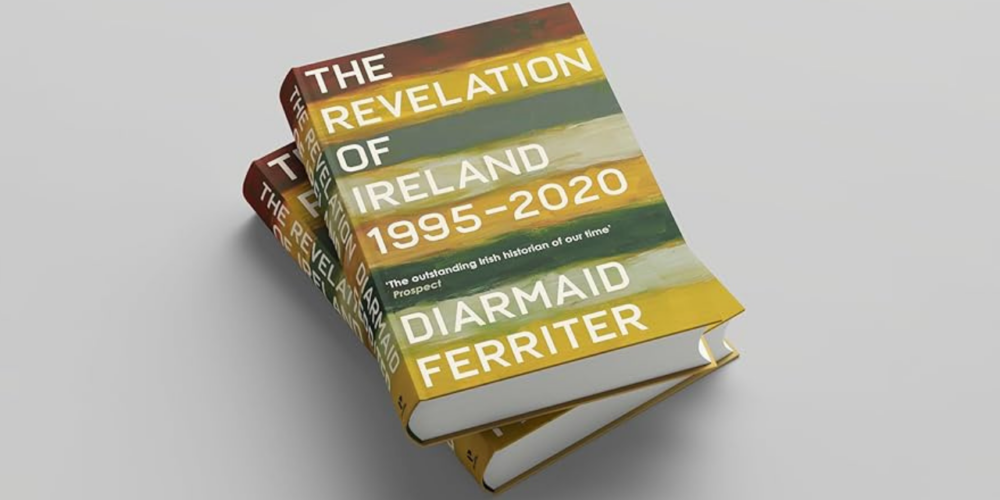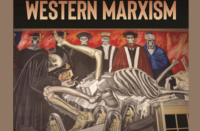Diarmaid Ferriter, who has come to be something resembling the public face of “History” in the respectable Irish media, has cannily inverted the title of his popular 2004 work The Transformation of Ireland 1900-2000 in his latest book The Revelation of Ireland 1995-2020, which represents a sequel of sorts outlining the changes in Irish society from the mid-1990s to the onset of the Covid-19 pandemic in 2020.
Over the course of seven thematic chapters, Ferriter expounds on the major changes in Irish politics and society in this period, such as the impact of the banking crisis or the end of the Troubles. These are then subdivided into shorter essays outlining the relevant events, giving the reader a fragmentary glimpse of what Ferriter means when he claims in the introduction that “The book’s title was prompted not only by what has been revealed about the past, but also how Ireland from the mid 1990s has revealed its potential and its limitations.”
Ferriter can never be faulted for failing to do his homework on the research, and his writing always reads very well: his chapter on the events leading up to the signing of the Good Friday Agreement and its aftermath will have much to offer both longtime observers and novices on the latter-day Six Counties. However, his approach is much better suited to some topics than others: short summaries may be an ideal way for a reader to get a sense of what Irish state and public positions were on the EU, US imperialism in Iraq and Palestine, but they make the chapter on culture feel more like a list of which contemporary bands and writers Ferriter likes (or dislikes) than anything resembling a serious historical analysis. The book can also be overly broad in terms of scope and references (it’s possibly the only book that cites Denise Chaila, Zionist historian Rory Miller and Terry Wogan’s obituary in the same chapter), meaning that it’s best viewed as a reference volume to guide newcomers to find out more about what grabs their attention within than a comprehensive history of the era. Topics like the decline of the Catholic Church into irrelevance or the experience of LGBT people in Ireland in that period are far too nuanced to be understood properly in the space allocated to them here.
What’s ultimately missing is any real sense of how the left and social movements across the political spectrum were part of this social and political transformation. Obvious transformational moments such as the water charges or Repeal campaign are near footnotes in the wider narrative, meriting a paragraph each, despite obviously reflecting and driving major changes in society. By not considering these in sufficient detail, Ferriter inadvertently fails to provide a sufficient linkage showing how the impact of the social and political events detailed elsewhere actually transformed Irish society, be it in the impact of austerity changing the political outlook of elements of society which had previously been taken for granted by establishment politicians such as the working class, particularly outside Dublin, or a newly confident feminist movement unrestrained by the hegemonic influence of the Catholic Church.
The Six Counties also come and go from the book in ways that leave it feeling incomplete in several places. The aftermath of the Good Friday Agreement has seen elements of society across both Irish states become more socially and economically integrated than at any point since partition in many respects, with it becoming increasingly common for those priced out of housing in the 26 counties to rent or even buy property in the North whilst working in the 26 counties. The 26 counties’ experiences with changes in society relating to LGBT and pro-choice movements were also mirrored in the 6 counties, with a considerable overlap in activists involved. This to say nothing of how Ireland’s disastrous environmental record in the period covered is a problem which is ultimately ignorant of borders. This all-Ireland dimension is too often missing, despite a fine chapter on the Agreement and its aftermath that demonstrates the author is far from indifferent.
Like much of Ferriter’s work, this is a well-researched and highly readable introductory volume ideal for anyone looking for a general reader on modern Irish history. The task for the reader, perhaps, is to figure out where to start going deeper by looking through the citations and embracing béaloideas by hearing the testimony of those around them who lived through the changes brought upon Irish society by the Tiger and its aftermath.






